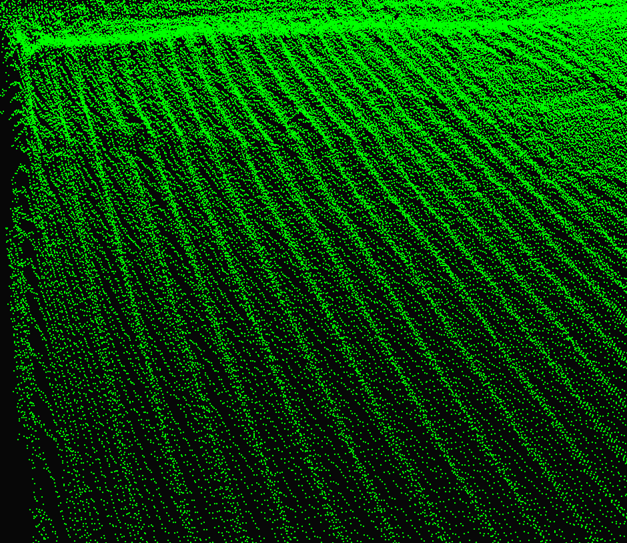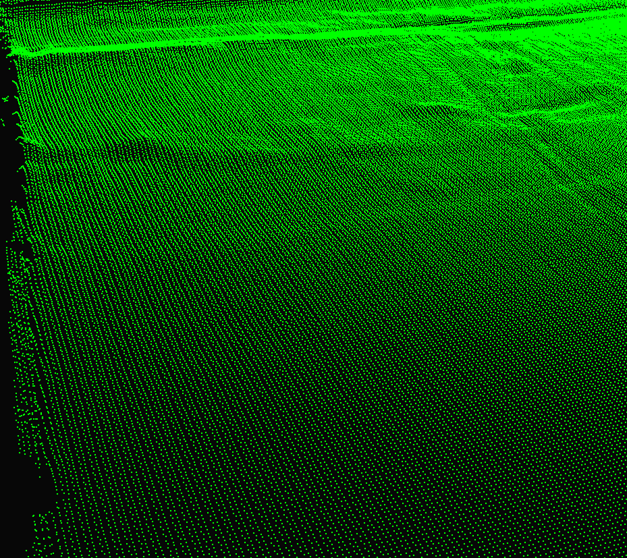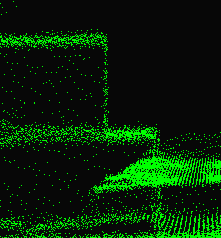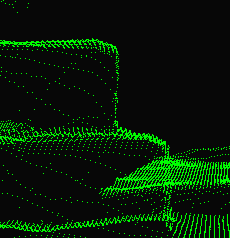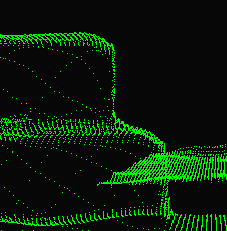Ripples from Interreflections
Problem
점 클라우드의 잔물결이나 파도 패턴으로 인해 객체 모양이 왜곡되어 나타납니다.
Potential causes
- Interreflections
Zivid 카메라에서 나오는 프로젝터 빛은 작업물에서 직접 반사되어 카메라로 돌아오도록 설계되었습니다. 그러나 이 빛은 반짝이는 빈 벽이나 근처 물체에서도 반사되어 직접 신호를 방해하는 추가적인 반사를 생성합니다. 상호 반사라고 하는 이 현상은 포인트 클라우드에 잔물결이나 파동을 일으킬 수 있습니다.
- Ambient light interference
포인트 클라우드의 잔물결은 주변광 간섭으로 인해 발생할 수도 있습니다. Ripples from Ambient Light Interference 를 참조하여 처리하세요.
Potential solution
문제를 식별하세요
2D 이미지에서 빛이 반사되는 흔적, 특히 반짝이는 빈 벽에서 물체로 반사되는 흔적을 살펴보세요. 예를 들어, 아래 이미지에서 빛은 빈 벽에서 빈 바닥의 봉투로 선명하게 반사됩니다. 이러한 상호 반사는 잔물결 효과를 초래합니다. 왼쪽 상단 이미지를 참조하세요.
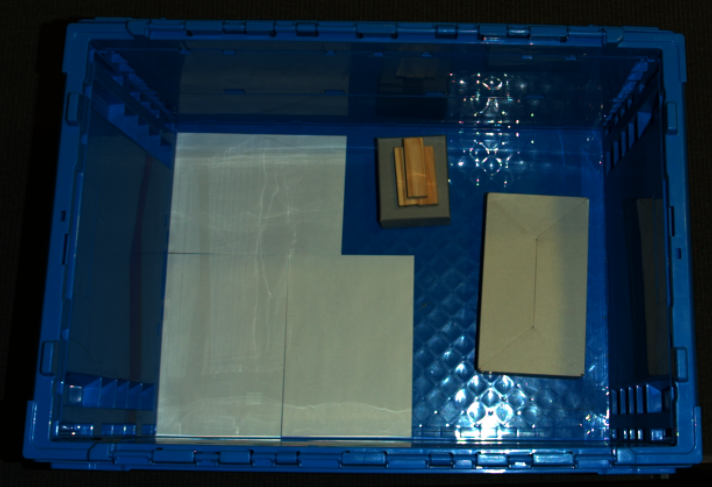
올바른 비전 엔진을 선택하세요
Stripe Engine, Sage Engine, 또는 Omni Engine: 이러한 엔진은 자연스럽게 파급 효과를 줄이므로 추가적인 억제가 필요하지 않을 수 있습니다.
Phase Engine : 속도가 우선이지만 잔물결이 나타날 가능성이 더 높은 경우 이 엔진을 사용하세요. 억제를 위해 다음 단계를 따르세요.
스무딩 필터 조정
Noise Filter Suppression: 이 필터를 활성화하고 위 그림과 같이 잔물결이 제거되거나 줄어드는지 확인합니다.
Gaussian Smoothing: 잔물결이 지속되면 잔물결이 제거되거나 충분히 줄어들 때까지
sigma값을 점차 늘립니다.
객체 모양에 미치는 영향 평가
필터링을 적용한 후, 스무딩이 장면의 가장자리와 모양에 어떤 영향을 미쳤는지 주의 깊게 평가해 보세요. 아래 그림은 이 시나리오에서 스무딩의 효과를 보여줍니다.
객체가 손상되지 않고 애플리케이션에서 인식 가능한지 확인하세요. 예를 들어, 픽 포즈를 결정하거나 CAD 기반 매칭을 수행하는 알고리즘은 선명한 모서리와 정확한 모양을 필요로 합니다. 스무딩으로 인해 모서리가 왜곡되거나 모양이 너무 많이 변형되는 경우, Gaussian 필터
sigma를 줄이거나 노이즈 필터Suppression해제하여 균형을 찾으세요.이 필터는 반짝이는 금속 원통과 같이 대비가 강한 물체의 모양을 유지하는 데 필수적입니다. 이러한 물체는 contrast distortion artifacts 가 발생하기 쉽습니다. 이러한 경우에는 필터를 활성화해 두세요. 대비 왜곡 문제가 없는 장면에서는 이 필터를 비활성화하여 불필요한 스무딩을 최소화하세요.
